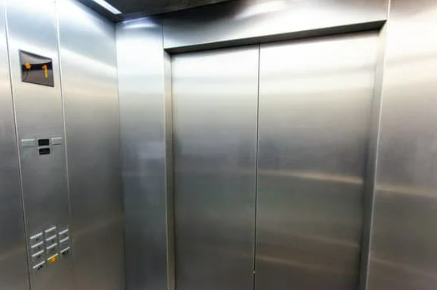By: Victoria Brun
It’s one of the most dreaded questions writers get asked: where do you get your ideas from? It seems to imply there is some treasure chest filled with brilliant plots and premises hidden away somewhere that successful writers have stumbled upon and can share. However, while there is no such treasure chest (as far as I know), there are some tricks and tips that can help you create new story ideas.
Of course, for the drabble writer, there is the additional challenge of crafting ideas suitable for the constricting format of the 100-word story, but here too, there are strategies to identify suitable ideas or for shrinking down larger ones to fit.
Here are twelve such tips to get you writing:
1. Read drabbles.
While this tip is painfully obvious, it still needs stating because it is critical. I’ve been shocked by the number of aspiring short story writers I’ve met who don’t read short stories. Reading the format or genre you want to write is essential. To write drabbles, you must first train yourself to recognize what types of ideas work for drabbles, and the best way to do that is to read them.
100-Foot Crow contributor Yvonne Lang advises drabble writers to “read a lot of flash fiction, micro-fiction, and best of all drabbles. See how experts craft them… There is an art to telling a tale so succinctly, and the best way to be inspired is to look at successful pieces and see which calls to you.”
2. Read beyond drabbles.
Story ideas can come from anywhere—yes, even doom scrolling on social media. However, exposing yourself to good writing is a better bet for finding ideas that spark your creativity. It doesn’t need to be short fiction; it can be novels or nonfiction. If you’re looking to write science fiction, reading about scientific discoveries is a good bet to get the creative juices flowing. If you want to write fantasy, you can dig into old myths and folktales. If you want to write horror, you can read about politics.
3. Be curious.
Dig further into the topics you’re interested in through both fiction and nonfiction to help turn a spark into a full and fresh idea. Allow yourself the freedom to go down rabbit holes or wormholes and explore. The more you dig into a concept or idea, the more conflicts, challenges, and mysteries arise—and those are the buds for stories.
4. Write down your ideas.
Record all your ideas in a place where you can easily find them again. Don’t judge your ideas; just get them down on paper. Each idea may be a single phrase or a full-page of notes. Once they’re on paper you can evaluate or edit them, but it’s important not to kill an idea before it’s on paper.
As famed cartoonist Gary Larson said, “The idea for any cartoon (my experience, anyway) is rarely spontaneous. Good ideas usually evolve out of pretty lame ones, and vice versa.”
While drabbles are obviously not cartoons, they have a lot in common with them: they both tell a complete story in a few words, so I think this advice transfers perfectly to drabbles. So return to your idea list periodically. With fresh eyes and a different perspective, a “pretty lame” idea might become a great one.
5. Combine ideas.
Creativity is all about making connections. If you connect two “old” ideas in a new way, that’s now a fresh idea. You can use your idea list to bring together ideas too small to work on their own (e.g., a character idea and a setting idea) and create something new and brilliant. Obviously, for drabbles this only works for small ideas, which is why it is important to save even tiny concepts that don’t seem like enough to make a story.
6. Drill down on your ideas.
If your ideas are too big for drabbles, narrow in on the core elements. Choose a single character, a single setting, and a single moment. Through one moment you can tell an entire story.
100-Foot Crow contributor Gideon P. Smith notes that “drabbles don’t always have to be about the point that would be the climax of the short story… it can also just be a key moment from that tale.”
Dale Parnell, another contributor, presents a different strategy for cutting ideas down to drabble size: “For me, a drabble is a little like a good joke, so if you have a story idea, try condensing it down to two basic parts—setup and punchline. I’m often surprised by what I can cut from a story and still have a satisfying pay-off.”
7. Don’t fear the familiar.
Just because an idea has been done a thousand times doesn’t mean you can’t have a fresh take on it. (Don’t believe me? Check out this zombie drabble or this werewolf drabble.)
In fact, Smith notes that drabble writers can use familiar concepts to their advantage: “With drabbles you want as much of the writing to be ‘off the page’ as possible, so you take advantage of things that people are very familiar with, where just one word might conjure a whole image without specifying every detail.”
8. Take a hike.
If you get stuck, and your brain refuses to give you anything, take a break and do something physical that moves your body but frees your brain to wander. Walking seems to be a favored pastime of writers, including such literary figures as William Wordsworth and Virginia Woolf. In fact, a 2014 study by Stanford University found that walking boosts creative output by about sixty percent.
9. Think of a strange world.
One way to generate a story is to start by creating a strange world. It can be completely fantastical or have just one small deviation from our own. Next, imagine a problem that would occur in that world. Finally, think of an individual who would be greatly impacted by that problem. That person is your protagonist. Now tell their story as they face that challenge.
10. Visualize a scene.
If you’re a visual person, you may like how Thomas J. Griffin, 100-Foot Crow contributor and Flash Point Science Fiction editor, creates drabble ideas.
“Drabbles to me almost have more in common with visual art than other forms of creative writing,” he said. “All stories start with ideas, but the trick isn’t coming up with drabble-sized concepts, it’s how you choose to develop them. Drabbles are so concise that typical formatting (exposition, inciting incident, rising action, etc.) can feel rushed; instead, I try to picture the idea in a single snapshot, visualizing the scene as a photo or an oil painting, then translate that visual into words.”
11. Add limitations.
Although this may sound contrary, constraints can drive creativity. If thinking of any story idea is too difficult, narrowing your options may spark new ideas and bolster your imagination. Choose a word from a list of one-word writing prompts and write a story using that word or about that concept.
12. Build it into a regular practice.
If you regularly write down interesting ideas and develop them into stories, you train your brain to be creative and a story-generating machine.
As Maya Angelou said, “You can’t use up creativity. The more you use, the more you have.”
Now go forth and write drabbles!
P.S. If you liked this post, you should sign up for your free newsletter!
***
“I don’t know where my ideas come from. I will admit, however, that one key ingredient is caffeine. I get a couple cups of coffee into me and weird things just start to happen.” – Gary Larson
Posted April 4, 2025.




